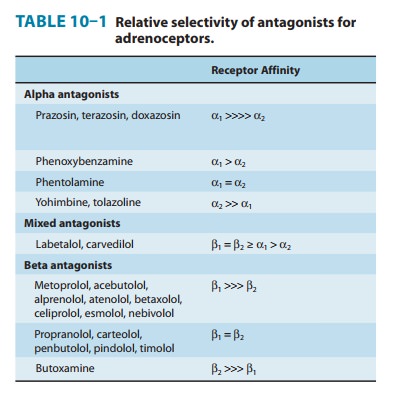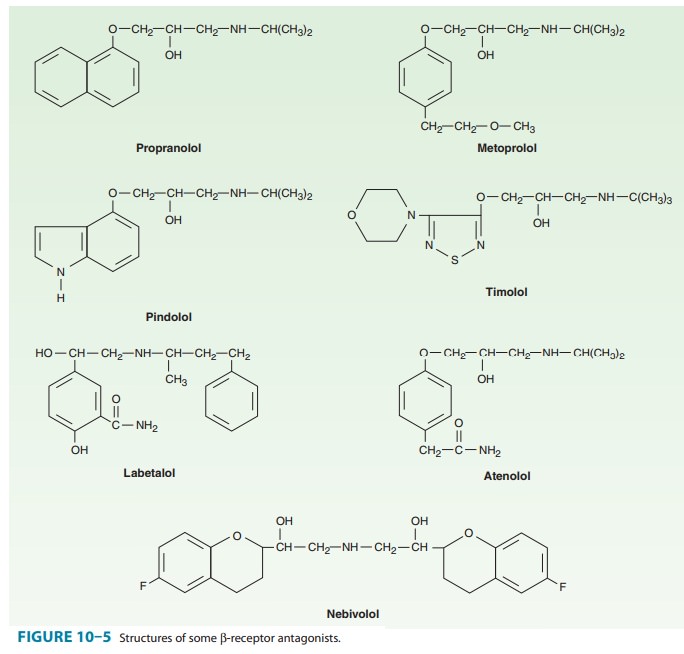Chapter: Basic & Clinical Pharmacology : Adrenoceptor Antagonist Drugs
Basic Pharmacology of the Beta Receptor Antagonist Drugs
BASIC
PHARMACOLOGY OF THE BETA RECEPTOR ANTAGONIST DRUGS
Beta-receptor
antagonists share the common feature of antagoniz-ing the effects of
catecholamines at β
adrenoceptors. Beta-blocking drugs occupy β receptors and competitively reduce receptor
occu-pancy by catecholamines and other β agonists. (A few members of this group, used
only for experimental purposes, bind irreversibly to β receptors.) Most β-blocking drugs in clinical use are pure
antagonists; that is, the occupancy of a β receptor by such a drug causes no activation
of the receptor. However, some are partial agonists; that is, they cause
partial activation of the receptor, albeit less than that caused by the full
agonists epinephrine and isoprot-erenol. As described, partial agonists inhibit
the activation of β
receptors in the presence of high catecholamine concentrations but moderately
activate the receptors in the absence of endogenous agonists. Finally, evidence
suggests that some β
blockers (eg, betaxolol, metoprolol) are inverse
agonists— drugs that reduce constitutive activity of β receptors—in some tissues.
The clinical significance of this property is not known.

The
β-receptor–blocking
drugs differ in their relative affinities for β1 and β2 receptors (Table 10–1). Some have a higher
affinity for β1 than for β2 receptors, and this selectivity may have
impor-tant clinical implications. Since none of the clinically available β-receptor antagonists
are absolutely specific for β1receptors, theselectivity is dose-related; it
tends to diminish at higher drug con-centrations. Other major differences among
β
antagonists relate to their pharmacokinetic characteristics and local
anesthetic mem-brane-stabilizing effects.
Chemically,
most β-receptor
antagonist drugs (Figure 10–5) resemble isoproterenol to some degree (see
Figure 9–4).

Related Topics